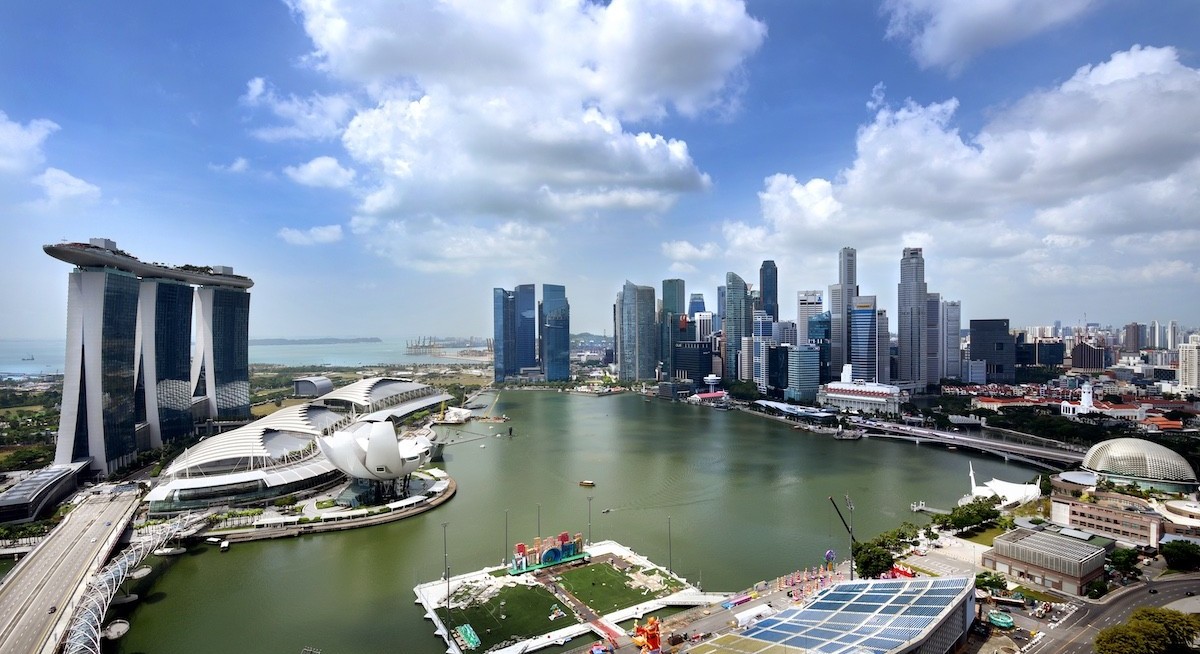SGD bonds are perfectly positioned to gain from this shift. Over the past decade, the stock of SGD bonds has risen from $320 billion to $867 billion as of end-March 2025, an average annual growth rate of 10.5%.
Not only do Singapore government bonds carry the highest-possible sovereign rating, the country’s corporate bond market has also burst into life amid increased confidence in the stability of the SGD.
This combination of government plus corporate bonds offers a compelling package for those seeking total returns i.e. positive returns, reasonable yields, and low risk.
Positive government bond returns
See also: Beyond AI, formal retail, luxury and financial sectors are growth stories to watch next year: HSBC
The gap between Singapore Government Securities (SGS) and US Treasury bills has widened significantly. At a time when many developed countries have seen their borrowings balloon, Singapore’s strong fiscal position and large external surpluses have impressed investors.
Singapore’s AAA-rated government bonds are regarded as a safe haven in an uncertain world. At the same time, the SGD is also benefiting from investors’ desire to be less USD-dependent. The SGD has strengthened against the USD by approximately 5% since the start of the year. While further upside looks limited, the recent decision by the Monetary Authority of Singapore (MAS) to keep its monetary settings unchanged, suggests that SGD is unlikely to give up its gains.
These factors have brought Singapore government bonds to the world’s attention and fuelled demand. As a result, SGS bond yields have been falling and bond prices have been rising steadily this year. The yield on the 10-year SGS is now approximately 250 basis points below that of the 10-year US Treasuries and in the first half of 2025, the SGS market rose 6.6% (according to Markit iBoxx ALBI Singapore Govt TR index, as of June 30, 2025), making it one of the world’s best-performing markets among major government bond markets.
See also: Stay selective across Europe; diversify beyond AI: Ivy Ng, CIO for Apac at DWS
The hunt for yields
On the other hand, Singapore government bonds’ declining yields are a disappointment for income seekers. Having enjoyed as much as almost 3% yield on a 6-month Singapore T-bill at the start of the year, income seekers are receiving just 1.7% currently (as of Aug 11, 2025).
We expect this pressure on yields to ease slightly in the second half of 2025 but not change course, as the SGD is likely to remain firm without appreciating much further. This is supported by the MAS’s decision to keep its monetary settings unchanged, and some analysts have even ruled out further easing in October.
There is therefore a strong incentive for this group of investors to turn to Singapore’s corporate bond market, especially as this market appears to be gaining further traction. Corporates tend to issue more bonds when interest rates are low, as this helps to reduce their funding costs while appealing to yield-seeking investors. There were 126 SGD-denominated corporate bond issuances in 2024 — the highest in a decade — and 60 in the first half of 2025 worth $12.5 billion. This suggests that the momentum is set to stay elevated.
The SGD corporate bond market also offers some specific advantages. It tends to be less volatile than USD markets, given differences in the way corporate bonds are valued and the Singapore market’s lower liquidity.
As a result, the Singapore largecap investment-grade corporate bond market rose by more than 4% in the first half of this year (according to iBoxx SGD Non-Sovereigns Large Cap Investment Grade Index, as of June 30, 2025). Based on an average duration of six years, the current average yield-to-maturity for SGD corporate bonds is around 3%, significantly higher than the current 5-year SGS yield of 1.68% (as of Aug 11, 2025).
As usual, the financial sector dominated the market, but it is the rising quality and quantity of corporate issuances that is worth noting. For example, in July, the Korea Development Bank (KDB) issued three-year SGD bonds worth $200 million. This is the largest SGD issue by a Korean entity, and appears to mark a stepup in foreign issuers’ regard for the SGD corporate bond market.
For more stories about where money flows, click here for Capital Section
We expect the trading momentum to stay elevated in the second half of 2025, with corporate issuers likely to take advantage of the lower borrowing cost. Meanwhile, investors hungry for yield stand ready to absorb any increased supply.
A compelling combo
In this current climate, an ideal SGD portfolio appears to be a balanced mix of government and corporate bonds. Investors can achieve solid total returns by tapping on the returns potential of government bonds, and the yield potential of corporate bonds.
However, investors should remain mindful of the credit risks associated with corporate bonds. Unlike government bonds, repayment on a corporate bond is subject to the issuer’s business fundamentals. As such, not all credits are created equal, and investors are advised to be selective.
Nevertheless, given the appeal of government and corporate bonds, there is less need to take on the additional risks that come with extending the duration of your bonds portfolio, or venturing into the high-yield end of the credit curve.
For equity investors, a blend of government and high-grade corporate bonds can offer a hedge against uncertainties. While a global recession is not our base case, we have assigned a not- insignificant 30% chance of this happening, given that the consequences of US tariff and other recent policy announcements are still unfolding. Any potential retreat in the global risk sentiment will likely lend further support to the SGD bond market across all sectors as investors look to achieve above-inflation yields and positive returns at lower market risk.
Chong Jiun Yeh is group chief investment officer at UOB Asset Management




